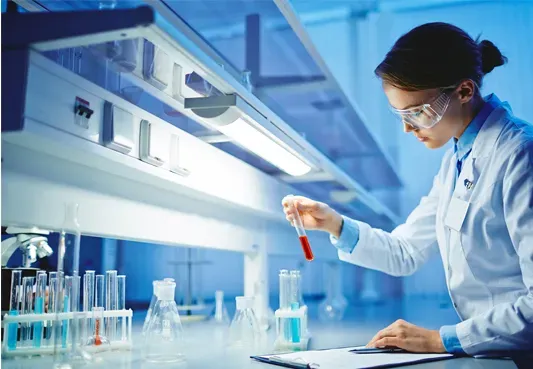
Exploring the Benefits and Risks of E905 Food Additive in Our Diets
Understanding E905 The Food Additive
Food additives are substances that are added to food to enhance its flavor, appearance, or shelf life. They have become a staple in modern food production, allowing for the mass production and preservation of various food products. One such additive that often raises questions is E905, also known as shellac. In this article, we will explore what E905 is, its sources, applications, and safety considerations.
What is E905?
E905, or shellac, is a resin obtained from the secretions of the female Kerria lacca insect, commonly found in India and Thailand. This natural resin has been used for centuries in various applications, including woodworking and cosmetics. In the food industry, E905 serves primarily as a glazing agent, providing a shiny finish to products. It is often used to coat fruits, chocolates, and confectionery, giving them an attractive sheen and a more appealing appearance.
Applications of E905
The primary purpose of E905 in food products is to improve visual appeal and texture. When used on fruits, such as apples and cherries, shellac helps to lock in moisture and prolong shelf life by preventing dehydration. In confectionery items, E905 is utilized as a coating for chocolates and candies, enhancing their glossy finish and preventing sugar crystallization.
Beyond its use in fruits and sweets, shellac is also deployed in various dietary supplements and capsules. It provides a protective outer layer that not only keeps the contents intact but also aids in controlled release within the digestive system. This characteristic makes E905 particularly valued in the pharmaceutical industry.
Safety and Regulations
e905 food additive

One of the primary concerns with food additives is their safety for consumption. E905, classified as a food-grade additive, has been deemed safe for use by several regulatory agencies, including the European Food Safety Authority (EFSA) and the U.S. Food and Drug Administration (FDA). The FDA has recognized shellac as safe when used according to good manufacturing practices.
Despite its natural origin, some consumers express concern over the use of insect-derived products in food. While E905 is considered safe, it is essential for consumers to be informed and to read product labels to make responsible choices. Transparency from manufacturers regarding the use of food additives is crucial in fostering consumer confidence.
Vegan and Vegetarian Considerations
For those following a vegan or vegetarian lifestyle, it's important to know that E905 is derived from insects. Therefore, products containing shellac are not suitable for strict vegans and vegetarians. The growing demand for plant-based and synthetic alternatives has prompted food manufacturers to seek out replacement glazing agents that are free from animal products. Ingredients like carnauba wax and vegetable-based gums are becoming popular substitutes in the food industry.
Conclusion
E905, or shellac, is a versatile food additive that enhances the appearance and shelf life of a wide range of food products. While it has been deemed safe for consumption by major regulatory bodies, ethical considerations regarding its insect origin lead some consumers to prefer alternatives. As the food industry evolves, there is an increasing focus on transparency and the use of plant-based ingredients to cater to a diverse range of dietary preferences.
In summary, understanding additives like E905 is essential in navigating the modern food landscape. While these substances play a crucial role in food preservation and presentation, it’s always wise for consumers to stay informed and make choices that align with their values and dietary needs. As discussions about food additives continue, consumers can expect innovation and gradual shifts toward more sustainable and ethical practices in food production.
-
Sodium Dichloroisocyanurate Safety Handling ProtocolsNewsJul.29,2025
-
Mining Chemicals for Copper Extraction Processes GuideNewsJul.29,2025
-
Fertilizer for Sale Shipping and Storage TipsNewsJul.29,2025
-
Dimethyl Disulfide as Sulfurizing AgentNewsJul.29,2025
-
Benzotriazole Safety Data Handling and Storage GuidelinesNewsJul.29,2025
-
Ammonium Bicarbonate Safety Handling Storage GuidelinesNewsJul.29,2025
-
The Transformative Role Of Trichloroisocyanuric Acid in Water TreatmentNewsJul.23,2025
Hebei Tenger Chemical Technology Co., Ltd. focuses on the chemical industry and is committed to the export service of chemical raw materials.
-

view more DiethanolisopropanolamineIn the ever-growing field of chemical solutions, diethanolisopropanolamine (DEIPA) stands out as a versatile and important compound. Due to its unique chemical structure and properties, DEIPA is of interest to various industries including construction, personal care, and agriculture. -

view more TriisopropanolamineTriisopropanolamine (TIPA) alkanol amine substance, is a kind of alcohol amine compound with amino and alcohol hydroxyl, and because of its molecules contains both amino and hydroxyl. -

view more Tetramethyl Thiuram DisulfideTetramethyl thiuram disulfide, also known as TMTD, is a white to light-yellow powder with a distinct sulfur-like odor. It is soluble in organic solvents such as benzene, acetone, and ethyl acetate, making it highly versatile for use in different formulations. TMTD is known for its excellent vulcanization acceleration properties, which makes it a key ingredient in the production of rubber products. Additionally, it acts as an effective fungicide and bactericide, making it valuable in agricultural applications. Its high purity and stability ensure consistent performance, making it a preferred choice for manufacturers across various industries.











